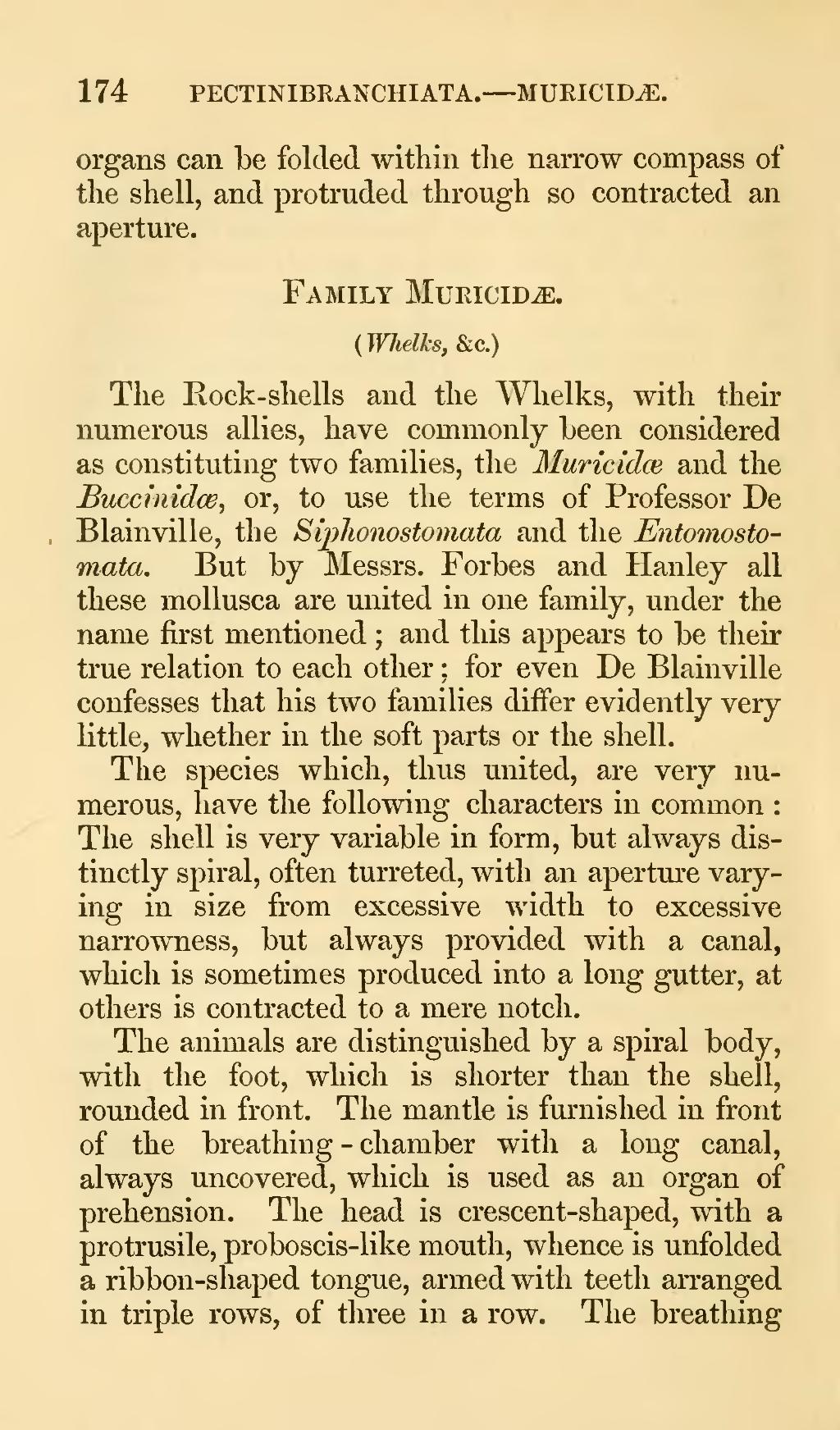organs can be folded within the narrow compass of the shell, and protruded through so contracted an aperture.
Family Muricidæ.
(Whelks, &c.)
The Rock-shells and the Whelks, with their numerous allies, have commonly been considered as constituting two families, the Muricidæ and the Buccinidæ, or, to use the terms of Professor De Blainville, the Siphonostomata and the Entomostomata. But by Messrs. Forbes and Hanley all these mollusca are united in one family, under the name first mentioned; and this appears to be their true relation to each other; for even De Blainville confesses that his two families differ evidently very little, whether in the soft parts or the shell.
The species which, thus united, are very numerous, have the following characters in common: The shell is very variable in form, but always distinctly spiral, often turreted, with an aperture varying in size from excessive width to excessive narrowness, but always provided with a canal, which is sometimes produced into a long gutter, at others is contracted to a mere notch.
The animals are distinguished by a spiral body, with the foot, which is shorter than the shell, rounded in front. The mantle is furnished in front of the breathing-chamber with a long canal, always uncovered, which is used as an organ of prehension. The head is crescent-shaped, with a protrusile, proboscis-like mouth, whence is unfolded a ribbon-shaped tongue, armed with teeth arranged in triple rows, of three in a row. The breathing
